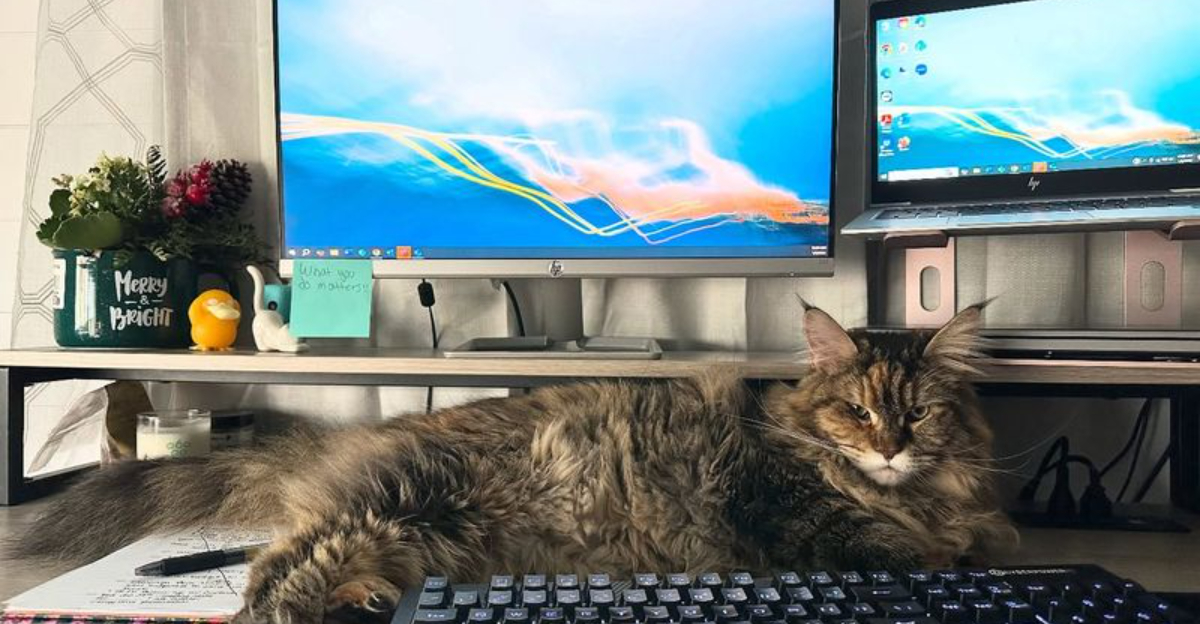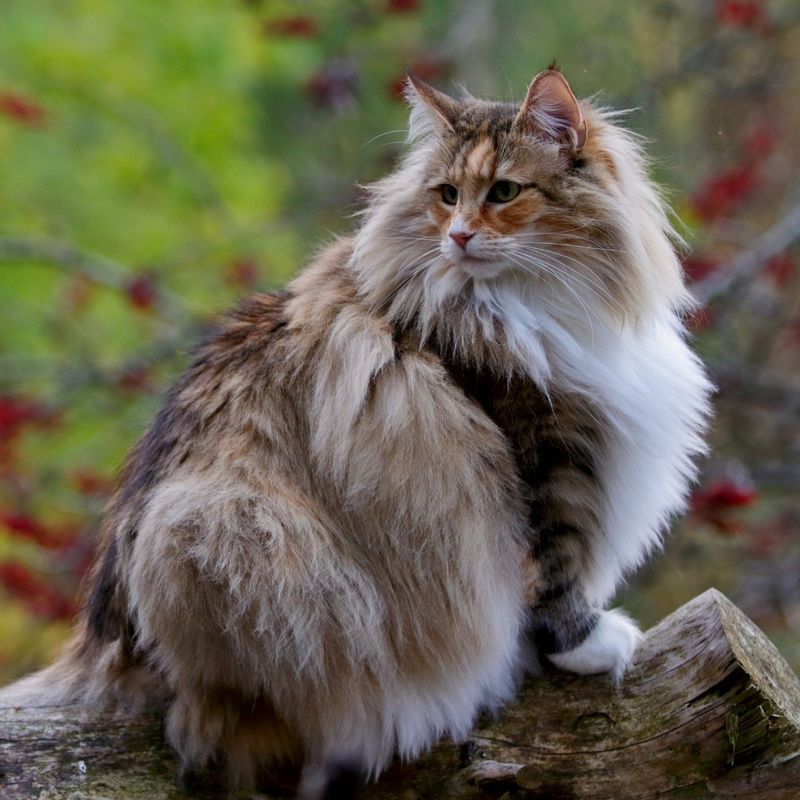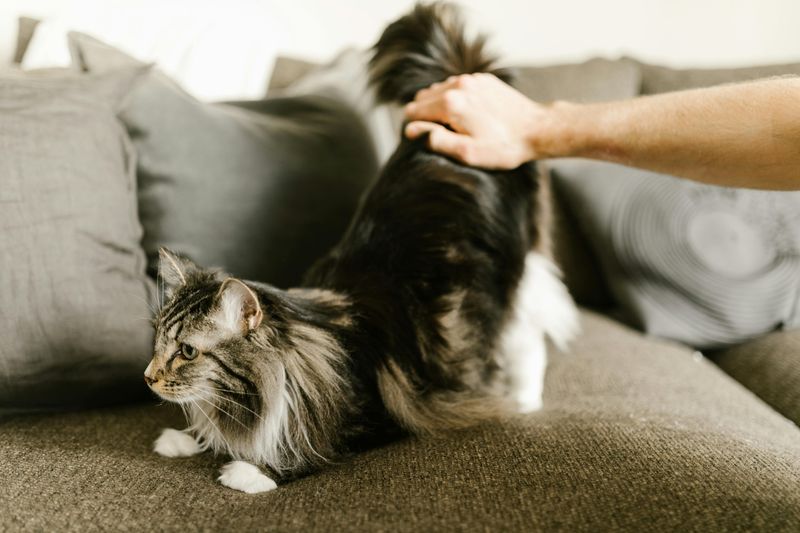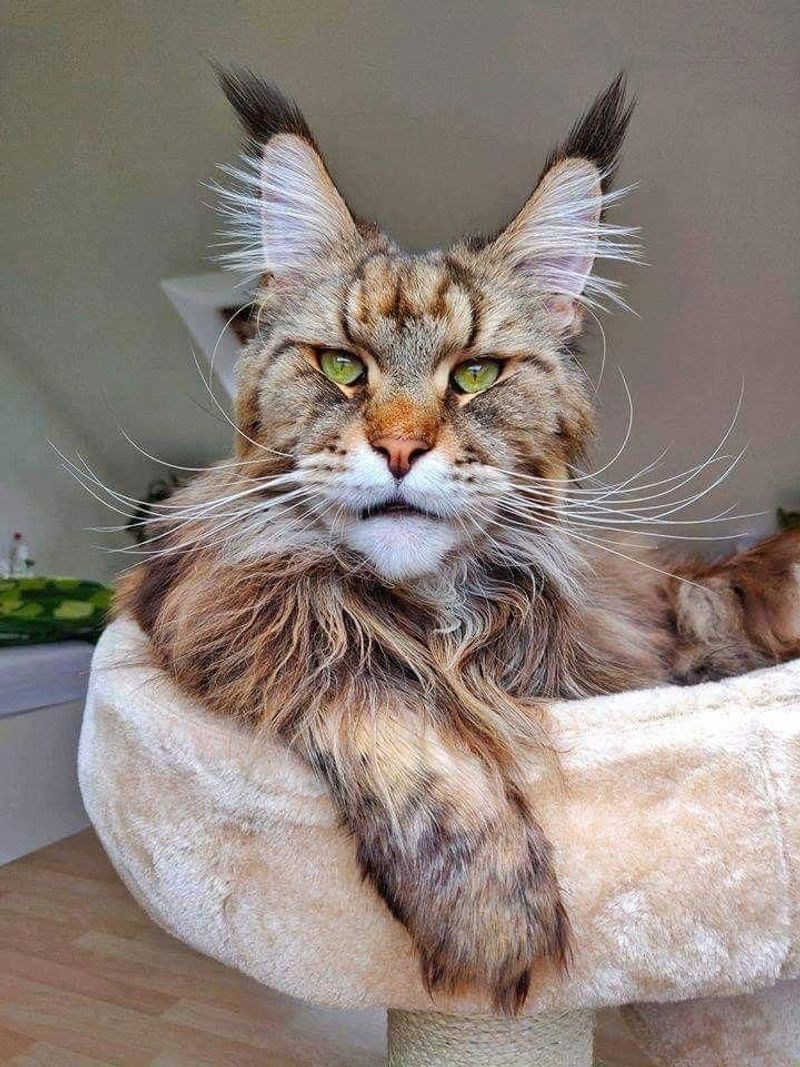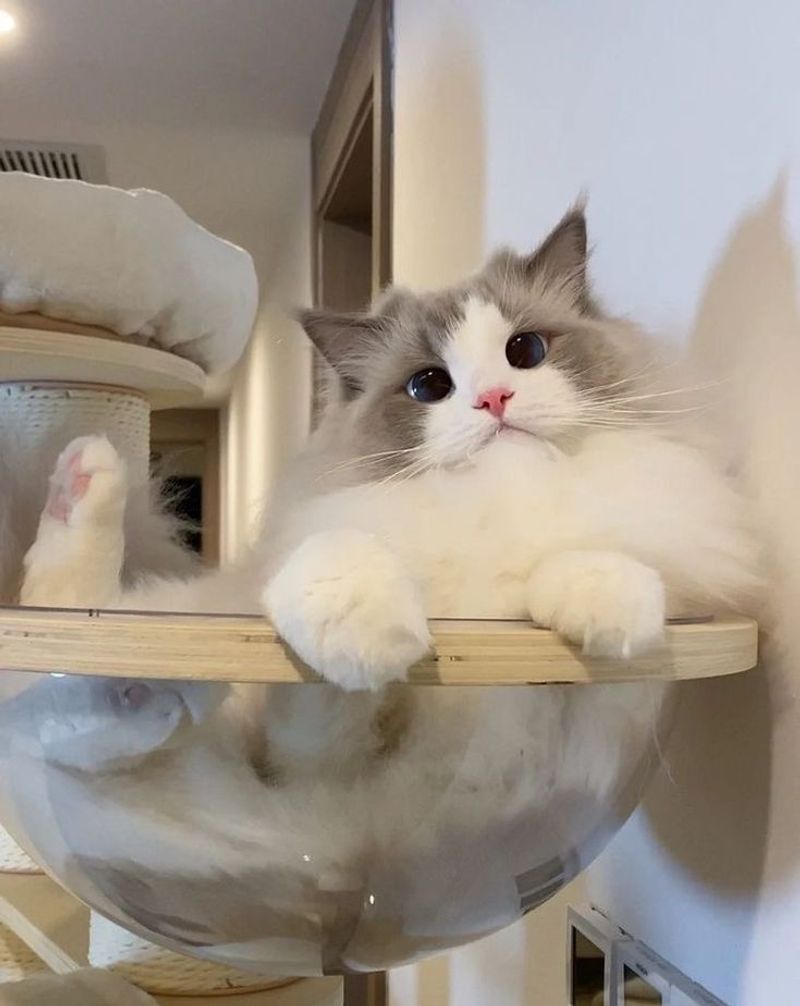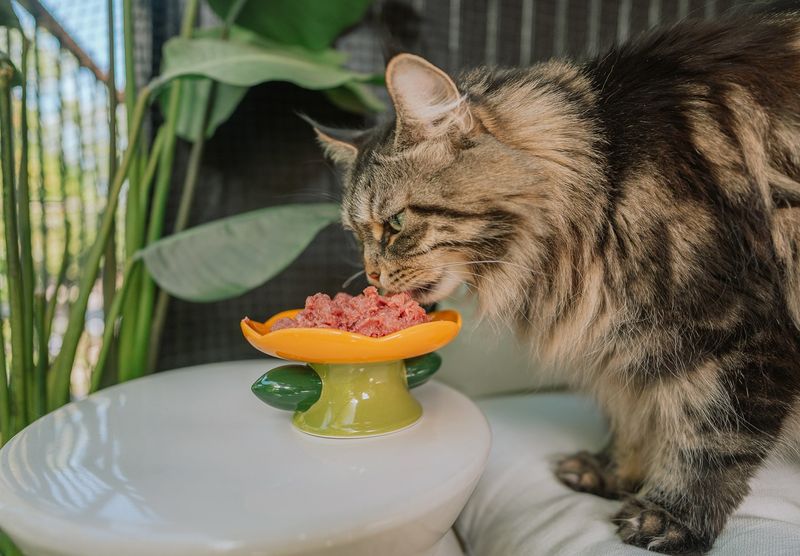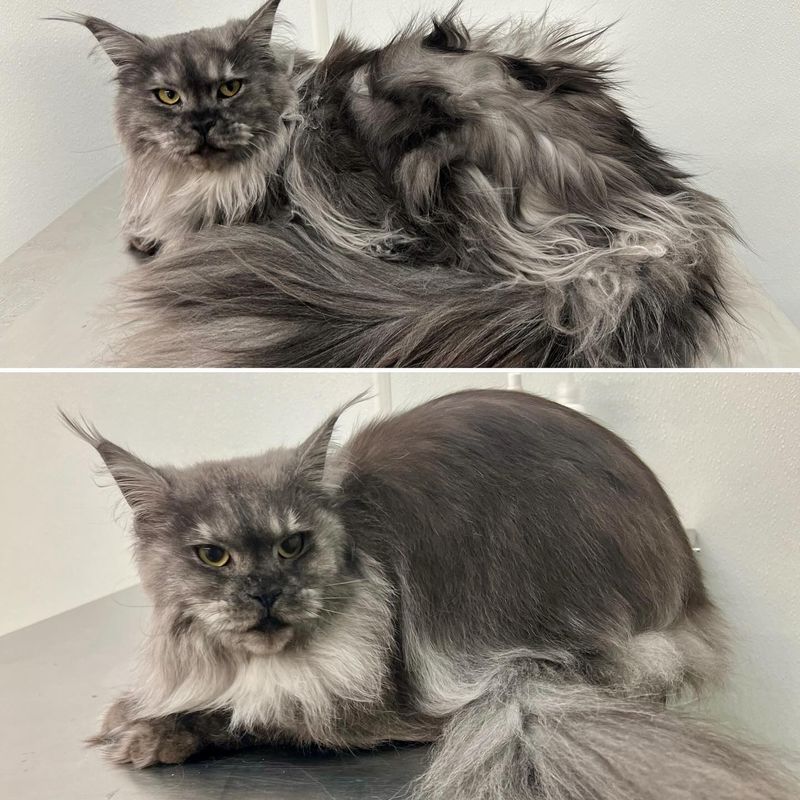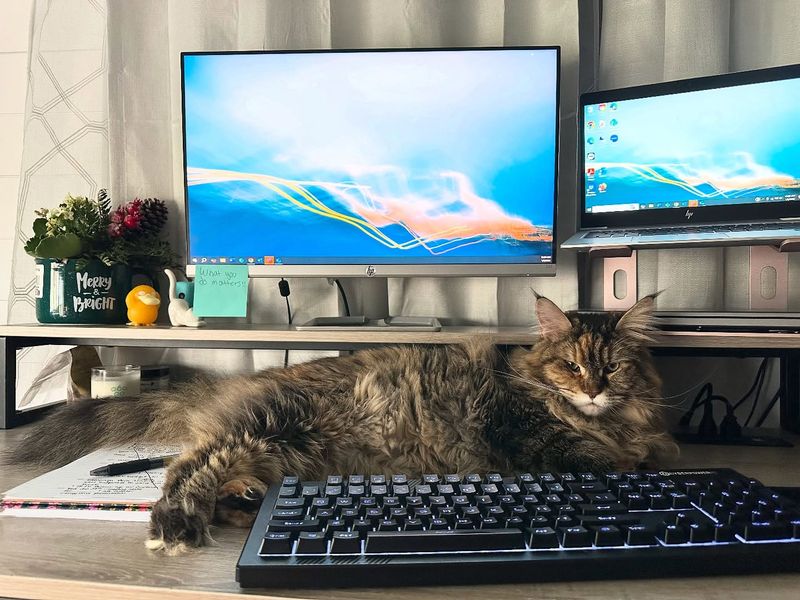📖 Table of Content:
- 1. Pro: Majestic Presence That Turns Heads
- 2. Pro: Cuddle Champions With Extra Surface Area
- 3. Pro: Playful Personalities in XL Packages
- 4. Pro: Dog-Like Loyalty Without the Walks
- 5. Conversation Starters With Paws
- 6. Pro: Confident Companions For Multi-Pet Homes
- 7. Con: Food Bills That Might Require a Second Job
- 8. Con: Litter Box Situations That Defy Description
- 9. Con: Fur Tumbleweeds That Defy Physics
- 10. Con: Counter Surfing Skills of Olympic Caliber
- 11. Con: Strength That Transforms Your Home
- 12. Con: Personal Space? What Personal Space?
There’s something undeniably magical about sharing your home with a feline that looks like it just wandered in from the wild. Big cat breeds like Maine Coons, Ragdolls, and Savannahs don’t just walk into a room—they make an entrance. With their regal fluff, dog-like loyalty, and larger-than-life personalities, these gentle giants are stealing hearts and sofas across the world.
But before you fall head over heels for their majestic charm, it’s worth knowing what life with an oversized kitty really looks like. From XL cuddles and sky-high jumps to unexpected expenses and surprise furniture rearrangements, these cats bring both luxury and chaos in equal measure.
Here’s everything you need to know—pros, cons, and a few hilarious truths in between—before making room for one of these furry titans.
1. Pro: Majestic Presence That Turns Heads
Walking into a room with a Norwegian Forest Cat or Maine Coon lounging on your sofa instantly creates a wow factor that smaller cats simply can’t match. Their substantial size and luxurious coats command attention and admiration from visitors.
These gentle giants often weigh between 15-25 pounds, with some exceptional males reaching nearly 30 pounds of muscle and fluff. Their impressive stature makes them feel more like small dogs than typical housecats.
Many owners report feeling a special pride in having such a magnificent animal choose them as family. There’s something deeply satisfying about the bond with a creature that could look wild but chooses domesticity.
2. Pro: Cuddle Champions With Extra Surface Area
Big cats offer premium cuddle experiences that compact kitties just can’t provide. Their substantial bodies make perfect living blankets, especially during chilly winter evenings when they drape across your lap or chest.
Breeds like Ragdolls literally go limp when held, earning their name from their tendency to relax completely in your arms. This distinctive trait makes them exceptional snuggle partners who don’t mind being carried around like stuffed animals.
The weight and warmth of a large cat purring against you creates a deeply comforting sensation. Studies suggest this vibration may even promote healing and reduce stress, making your big cat an excellent therapy companion.
3. Pro: Playful Personalities in XL Packages
Large cat breeds often maintain kitten-like playfulness well into adulthood, bringing constant entertainment to your home. Watching a 20-pound Maine Coon chase a feather toy with the enthusiasm of a kitten creates daily moments of joy and laughter.
Their substantial size doesn’t slow them down – many large breeds like Bengals and Savannahs are incredibly athletic. They’ll perform impressive vertical jumps, sprint down hallways, and execute acrobatic turns that seem impossible for their size.
This playful nature means they’re excellent companions for active households and families with children. Many big cats enjoy interactive games and can even learn tricks like fetching or giving high-fives, providing endless entertainment.
4. Pro: Dog-Like Loyalty Without the Walks
Many large cat breeds display remarkable loyalty that rivals dogs. Breeds like Maine Coons and Ragdolls often follow their humans from room to room, unwilling to let their favorite person out of sight.
Unlike most independent, smaller cats, these gentle giants frequently come when called and greet you enthusiastically at the door. Some will even play fetch or walk on leashes, blurring the line between feline and canine companionship.
The best part? This dog-like devotion comes without the need for multiple daily walks in all weather conditions. Your loyal companion will be perfectly content with indoor playtime and the occasional supervised outdoor adventure on your terms.
5. Conversation Starters With Paws
Owning a magnificent Savannah or Norwegian Forest Cat instantly gives you fascinating conversation material. Their unusual size and appearance naturally draw questions and comments from visitors and even strangers who spot them in windows.
Their unique characteristics and histories make for great stories. Imagine explaining how your Savannah’s ancestors include African servals or how Norwegian Forest Cats were companions to Viking explorers!
Many large breed owners find themselves part of passionate communities, both online and at specialty cat shows. These connections often blossom into friendships built around shared appreciation for these extraordinary animals, creating a social network you might never have expected from pet ownership.
6. Pro: Confident Companions For Multi-Pet Homes
Large cat breeds typically possess self-assured personalities that help them integrate seamlessly into households with other pets. Their confidence means they’re less likely to be intimidated by dogs or other animals, often establishing friendly relationships where smaller cats might feel threatened.
Breeds like Ragdolls and Maine Coons are known for their easygoing temperaments. Many owners report these gentle giants becoming best friends with family dogs, creating heartwarming sleeping piles of fur and unexpected animal alliances.
Their substantial size also means they can hold their own if play gets rough, making introductions to existing pets less stressful. This balanced dynamic creates harmony in multi-pet households that might otherwise experience tension with more timid feline breeds.
7. Con: Food Bills That Might Require a Second Job
Prepare for grocery bills that reflect your cat’s impressive size! Large breeds can consume twice the amount of food as average cats, with some males requiring up to a can of wet food daily plus premium dry kibble.
Quality matters even more with big cats, as their larger frames need proper nutrition to maintain joint health and prevent weight-related issues. Budget-friendly brands often won’t provide the protein levels and nutrients these magnificent beasts require.
Many owners find themselves upgrading to premium foods with higher meat content, adding raw components, or even cooking special meals. While their purrs of appreciation might be worth every penny, the monthly food expenses can certainly surprise unprepared pet parents.
8. Con: Litter Box Situations That Defy Description
Standard litter boxes simply won’t cut it for your supersized feline. Large cats need extra-large boxes, often repurposed storage containers, to accommodate their substantial frames and prevent uncomfortable accidents.
The sheer volume of waste produced by a 20-pound cat can be startling. Owners often find themselves scooping twice daily and completely changing litter more frequently than with smaller cats, creating an unexpected time commitment.
Finding suitable locations for these jumbo facilities presents another challenge. The oversized boxes require significant floor space in bathrooms or laundry rooms, and their contents can produce equally outsized odors if not maintained diligently. Many owners invest in special ventilation systems or odor-neutralizing products specifically for this challenge.
9. Con: Fur Tumbleweeds That Defy Physics
Most large cat breeds sport magnificent coats that shed with impressive enthusiasm. During seasonal changes, you’ll discover fur in places that seem physically impossible – floating in your coffee, woven into freshly baked bread, or mysteriously appearing on clothes straight from the dryer.
The sheer volume can overwhelm standard vacuum cleaners. Many owners upgrade to specialized pet models or schedule professional cleaning services. Brushing becomes a daily ritual rather than an occasional grooming session, sometimes yielding enough fur to create a second cat!
Long-haired varieties like Maine Coons and Norwegian Forest Cats require particular attention to prevent painful mats from forming. Their thick undercoats demand regular maintenance with specialized tools, adding another time commitment to your relationship.
10. Con: Counter Surfing Skills of Olympic Caliber
Forget putting precious items on high shelves – nothing is safe from a determined large cat with impressive reach. Their substantial height while standing on hind legs gives them access to countertops, refrigerator tops, and shelves that would be impossible territory for smaller felines.
Breeds like Bengals and Savannahs combine this reach with extraordinary jumping abilities, easily clearing 6 feet from a standing position. Your carefully arranged decorative items become fascinating toys to bat onto the floor, often at 3 AM for maximum dramatic effect.
Many owners eventually surrender certain spaces entirely to their feline overlords, recognizing the futility of constant battles. Kitchen counters become contested territories requiring constant vigilance or specialized deterrents that wouldn’t be necessary with less athletically gifted companions.
11. Con: Strength That Transforms Your Home
Large cats possess physical power that can literally reshape your living space. Doors that once closed properly develop mysterious gaps after being repeatedly pushed open by determined 20-pound felines who reject the concept of human privacy.
Window screens face particular peril. The casual pressure of a big cat leaning against them while bird-watching can create bulges or tears that smaller cats couldn’t manage. Many owners find themselves regularly replacing screens or installing reinforced versions.
Furniture bears the brunt of their substantial weight and powerful claws. Scratching posts designed for average cats often topple under enthusiastic use, leading owners to invest in sturdier alternatives or custom cat trees built with materials that might otherwise be used in actual home construction.
12. Con: Personal Space? What Personal Space?
Large cat breeds often have diminished understanding of boundaries compared to their more aloof smaller cousins. Your laptop keyboard becomes their preferred napping spot precisely when you’re on an important video call, their substantial bodies completely obscuring your screen.
Bathroom privacy becomes a foreign concept as your 18-pound Maine Coon insists on supervising shower time, often pushing open doors you thought were securely closed. Some owners report installing special latches specifically to maintain bathroom solitude.
Sleeping arrangements frequently involve negotiating with a bed hog who somehow expands to occupy maximum mattress space. Many couples find themselves contorted around a sprawling feline who has claimed the prime center position, leaving humans clinging to the edges of their own beds.
